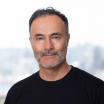Coming electrified versions of the new-generation Ford Ranger, Ranger Raptor and Everest could extend the life of the Australian-designed and engineered T6 platform well into the 2030s.
On sale from June, July and August respectively this year in Australia, the T6.2-based trucks and SUV are set to eventually adopt – or even completely switch to in time – a variety of electrification powertrain options over the next few years.
These are expected to include varying levels of hybrid electric vehicle (HEV) combinations, plug-in hybrid electric vehicle (PHEV) and even full battery electric vehicle (BEV) configurations.
This will largely be contingent on which global markets want or need electrification – and also to what degree – in their future Ranger, Ranger Raptor or Everest, to help meet growing calls for pick-up trucks that emit less pollution than those with internal combustion engines (ICE).
The upshot is that Ford Australia is likely to continue vital design and engineering work on these T6.2 models as they evolve over the next several years, out of its Melbourne headquarter base, and tapping into Australian talent and ingenuity while keeping the workforce busy.
According to Ford Motor Company vehicle program director for icons and Ford Performance, Ali Jammoul, much has gone into ensuring the competitiveness of the new T6.2 models, that should see them meeting changing consumer and legislative demands into the 2030s.
“Certain markets are going faster to market (with EVs), 100 per cent,” he told CarsGuide at a recent T6.2 vehicle evaluation visit in South Australia. “Europe is the leading market… but ICE platform – especially in the truck segment, commercial segment and heavy-duty use – will probably continue to exist for a long time.
“As far as we’re concerned, we have the Model e organisation dedicated to BEVs, that you can take the maximum benefit of (EVs) for the customer, and then you have the Ford Blue organisation that is going to optimise our business, and part of that optimisation would be looking at these other markets that will continue to want to use the ICE platforms.
“And T6 could be in that category for sure.”
With Ford having announced back in 2019 that the Ranger, F-series truck and all their offshoots would eventually merge onto a single, all-new modular platform currently under development in the United States for release later on this decade, it was thought that the T6 models – which stretches back to the outgoing Ranger’s initial development that started in Melbourne in 2007 – would disappear once and for all from around 2028.
However, the implication now is that the T6.2 Ranger and Everest series could live on into the next decade as a lower-cost, ICE-based but electrification-capable truck and SUV line for more price-sensitive markets such as in Africa and South America, while their more-modern and advanced replacements might even employ an all-electric skateboard architecture and lightweight body materials, making them much more expensive.
That said, Mr Jammoul stopped short of revealing whether another heavy redesign of the Australian-engineered Ranger and Everest might be in the planning stages over the next few years.
“I don’t know about a third generation,” he said. “(But) I think we’ll do the right thing.
“Right now, we’re focused on delivering these base electrified platforms. With T6, we have a number of programs we’re thinking about to evolve it, and optimise it, and to continue to serve our global customers.”





.jpg)
.jpg)
.jpg)

_0.jpg)



.jpg)
 (1).jpg)


.jpg)


.jpg)
.jpg)
.jpg)
.jpg)





